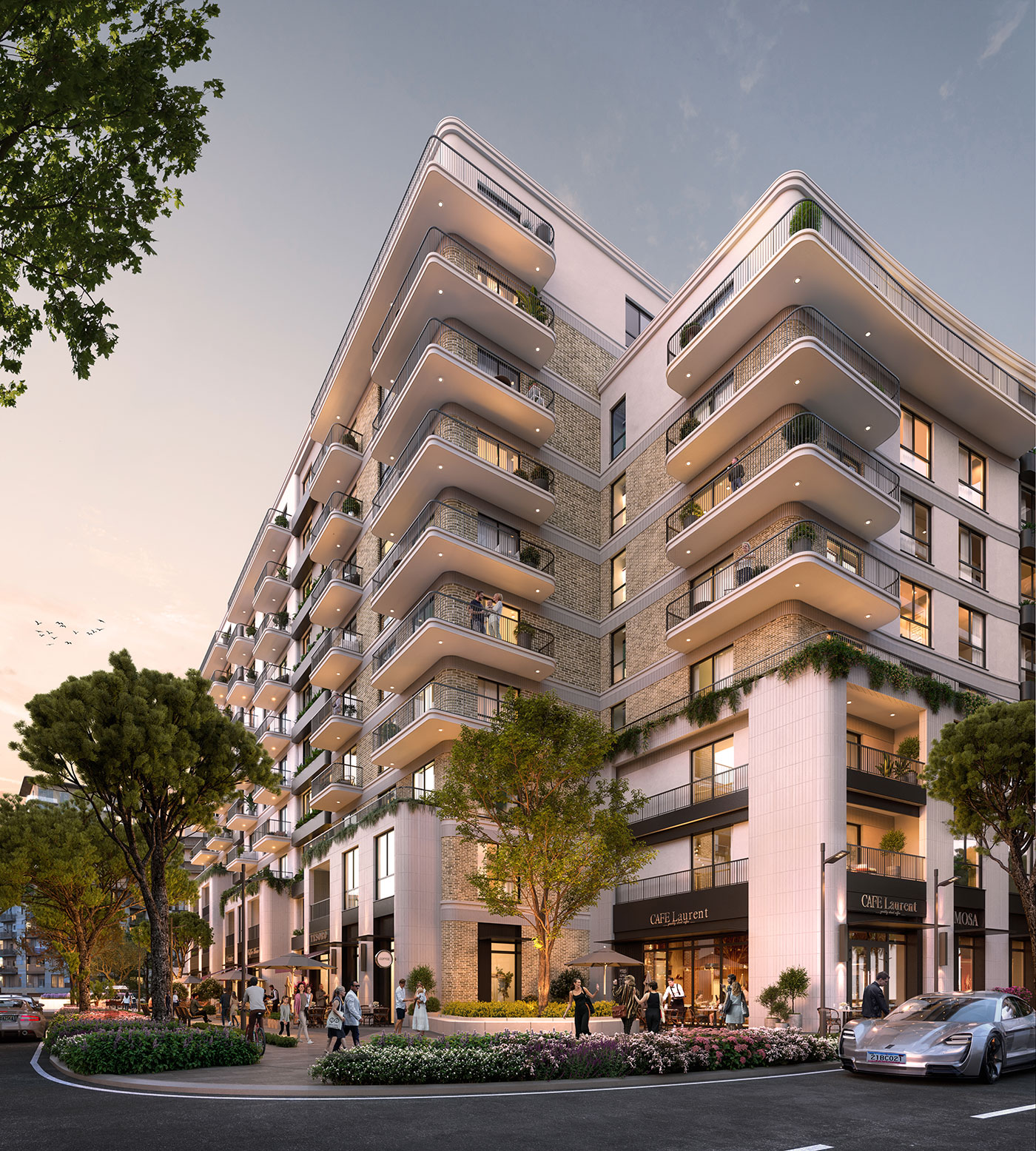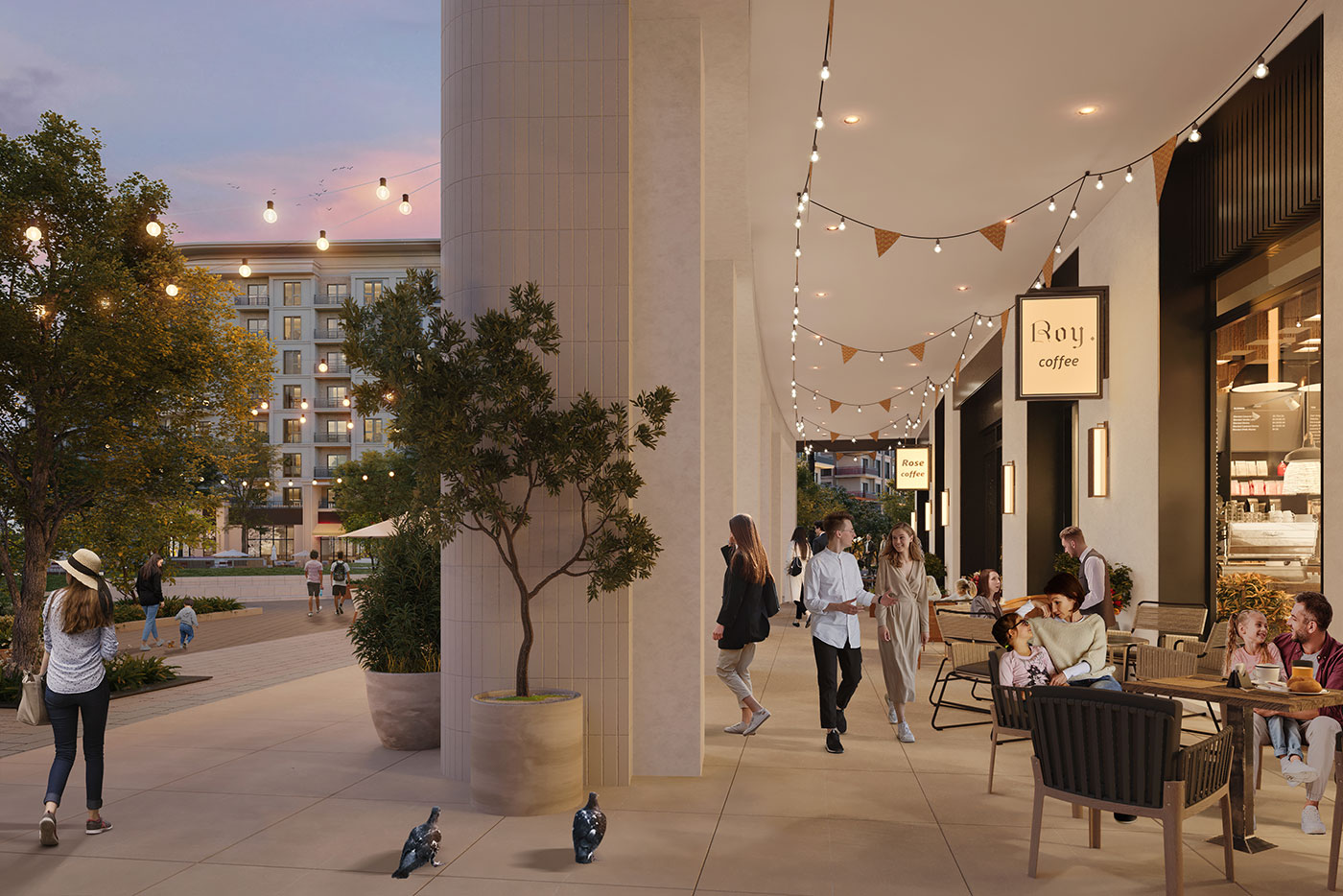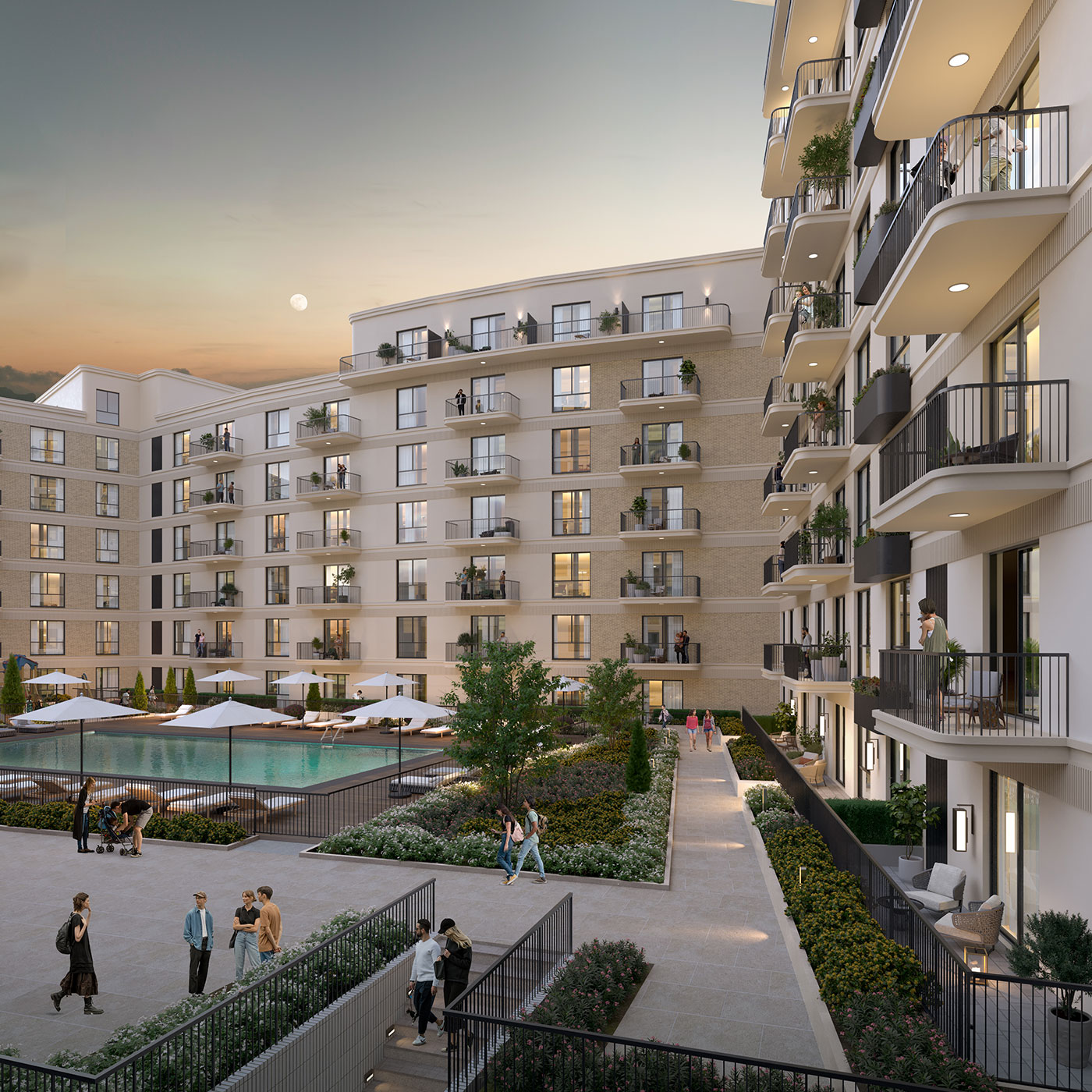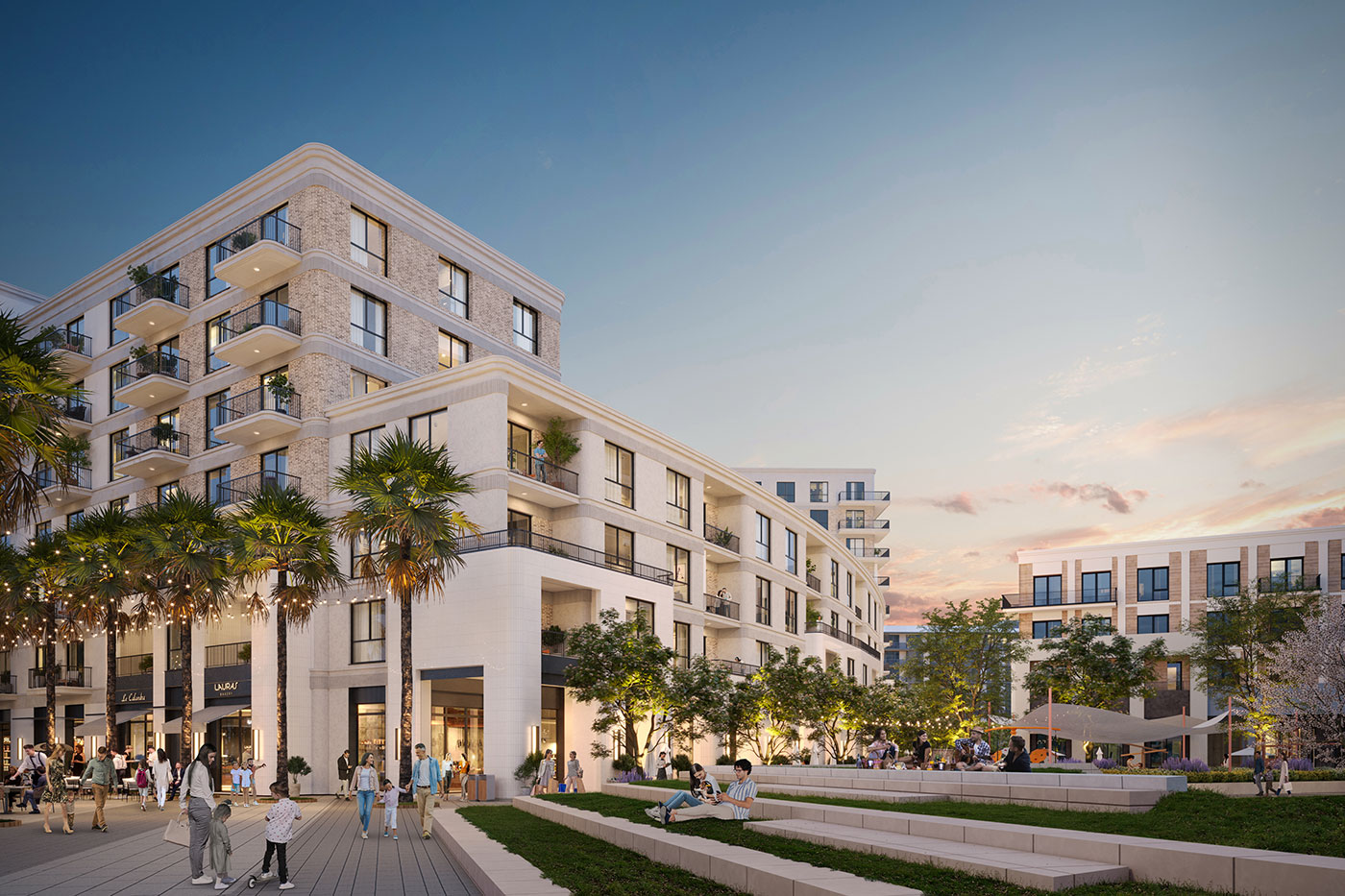21 Innovative Strategies for Marketing in Real Estate That Deliver Results

Arqsix
July 22nd, 2024

As a real estate professional, you know attracting buyers is key. But how? ‘Marketing in real estate’ is no longer just about listings and flyers; it’s about using strategies that resonate in a digital age. This guide unveils 21 proven tactics that transcend traditional methods, diving into the essentials of virtual tours, social media dominance, and local engagement to ensure your properties get noticed and sold. With this article, you’ll discover actionable insights to revolutionize your marketing efforts, without spoiling the innovative details to come.
The Power of Architectural Visualization
 Created by Arqsix
Created by Arqsix
Being a real estate professional, imagine having the power to help potential buyers visualize a property’s unique features and selling points, even before they set foot in it. That’s where architectural visualization comes into play. By providing accurate representations of properties, architectural visualization bridges the gap between the imagination of potential buyers and the reality of the space.
In addition to showcasing properties, architectural visualization offers:
Immersive experiences, such as asynchronous home tours via live video
Highly engaging and interactive experiences that allow potential buyers to envision themselves living within the space
Enhanced likelihood of a sale
So, if you’re wondering whether architectural visualization is essential for your real estate business, the answer is a resounding yes. It not only influences the buyer’s perceptions but also significantly drives their decisions, making it a crucial tool in your real estate marketing strategy.
Benefits of Architectural Visualization
When it comes to real estate marketing, visuals are paramount. They are the first thing that potential buyers notice, and they play a critical role in catching their attention and piquing their interest. That’s where architectural visualization steps in, enhancing the visual appeal of your property listings and attracting more qualified leads.
But the benefits of architectural visualization go beyond just aesthetics. It enables real estate professionals to streamline the design and decision-making process. With a detailed and engaging representation of properties, there are fewer costly revisions, saving both time and resources.
Moreover, architectural visualization reduces the reliance on physical prototypes. This means that potential buyers can embark on virtual tours of the property from the comfort of their homes, saving them the time and effort of an in-person visit.
Types of Architectural Visualization
Architectural visualization is not a one-size-fits-all approach. It encompasses various types, each offering unique experiences to potential buyers. For instance, 3D models created using modern computer software present various property designs, allowing real estate professionals to showcase different aspects of a property.
Virtual reality technology takes architectural visualization a step further by offering immersive experiences that captivate potential buyers. With a virtual reality headset, they can virtually walk through the property, inspecting every nook and corner as if they were physically present there.
One of the most popular types of architectural visualization is virtual staging. By showcasing how a space might be utilized differently, virtual staging caters to the unique preferences of various buyers. So, whether it’s a minimalist design or a lavish setup, virtual staging can enhance interest in properties, making it a powerful tool in your real estate marketing arsenal.
Creating Immersive Property Tours
 Created by Arqsix
Created by Arqsix
In the era of digitalization, it’s not enough to just list properties on your website or real estate platform. Today’s tech-savvy home buyers demand more. They want to explore properties in detail, feel the space, and understand its layout. That’s where immersive property tours come into play, helping you capture the essence of a property.
Immersive property tours can be created using architectural visualization techniques, such as Augmented Reality (AR) and Virtual Reality (VR). One such strategy is virtual staging, which allows real estate agents to present furnished property previews, significantly increasing the visual appeal of their listings for potential buyers.
But that’s not all. High-quality video tours offer several benefits for prospective buyers:
They provide a detailed visual journey through a property.
They are attractive and engaging.
They serve as a time-saving resource, especially for remote buyers who can’t visit the property in person.
They help potential buyers visualize themselves living in the space.
In addition to video tours, renderings can also be used to further immerse potential buyers in a property.
Virtual Tour Platforms
To create and host immersive 3D virtual tours, real estate professionals often turn to robust solutions like:
Asteroom
Matterport
CloudPano
Zillow
These platforms are widely utilized in the real estate industry, owing to their ease of use and the quality of virtual tours they generate.
These platforms require certain equipment to create virtual tours. Professionals typically use 360-degree cameras or smartphones equipped with special add-ons to capture panoramic images. The captured images are then organized into a complete 3D tour by the virtual tour software, eliminating the need for manual stitching of images.
Choosing the right virtual tour platform can significantly enhance your real estate marketing strategy. With the correct tools and platforms, you can create immersive, high-quality virtual tours, increasing your listings’ visual appeal and attracting more potential buyers.
Best Practices for Virtual Tours
Creating a virtual tour is not just about capturing panoramic images of a property. There are certain best practices that real estate professionals need to follow to create a realistic and attractive view of the property. For instance, using the right equipment, ensuring proper lighting, and placing the camera at eye level can significantly enhance the quality of your virtual tours.
Once the virtual tour is created, it needs to be uploaded to a hosting platform and then published across various marketing platforms to maximize reach. This includes your website, social media platforms, and real estate portals. With 74% of buyer’s agents considering video tours an important tool for selling a home, it’s clear that virtual tours are in high demand in the current market.
Moreover, asynchronous home tours provide a convenient solution for potential buyers. They allow buyers to:
Experience the property virtually at any time, without the need for an in-person visit
Save time and effort for both the real estate agent and the buyer
Foster a more immersive experience.
Making Virtual Tours Accessible
 Created by Arqsix
Created by Arqsix
As technology advances, the demand for accessibility in virtual tours is also increasing. By integrating 3D renderings into 360° visualizations, real estate professionals can provide a complete view of the property for remote buyers to experience from every angle, eliminating the need for physical presence.
Map-based virtual tours supplemented with 3D renderings are another way to make virtual tours more accessible. They highlight local amenities and offer a full overview of the property, which is greatly beneficial for potential buyers who are exploring options remotely.
But accessibility is not just about remote viewing. It’s also about catering to diverse user needs, including those with visual and motor disabilities. Virtual tours can be made more accessible by:
Adding audio descriptions for users with visual impairments
Ensuring compatibility with screen readers
Providing keyboard navigation options
Using high-contrast interfaces
These measures make the real estate market more inclusive and accessible to a wider audience.
Optimizing for Mobile Devices
With 76% of homeowners using a mobile device or tablet in their home search, it’s evident that optimizing for mobile devices is a necessity in today’s digital age. Providing a seamless web experience includes optimizing virtual tours for mobile access, as mobile usage is prevalent among home searchers.
Responsive design is crucial to adapt the website to any device and offer optimal viewing and interaction experiences. This ensures a good user experience, which is essential as website design influences 75% of people’s judgment of business credibility.
Real estate businesses must ensure that their listings are effectively showcased on mobile devices. This means ensuring that the information is current and displayed correctly on smaller screens. After all, a well-designed mobile interface can significantly impact your real estate business.
Inclusive Design Principles
Inclusive design principles go hand in hand with making virtual tours accessible. Universal design in virtual tours is essential to make experiences enjoyable for individuals with varying physical or cognitive abilities.
Property pages and listings should provide detailed descriptions, great photos, and virtual tours. Additionally, easy access to Google Maps and Google Earth can support diverse needs. This not only makes your listings more accessible but also enhances the user experience, making it easier for potential buyers to find and explore your properties.
By adopting inclusive design principles, real estate professionals can cater to a wider audience, ensuring that everyone, regardless of their physical abilities, can enjoy the immersive experience of virtual tours.
Leveraging Social Media for Real Estate Marketing
 Created by Arqsix
Created by Arqsix
Social media has become an integral part of our lives, influencing various aspects, including the way we buy and sell properties. For real estate professionals, social media offers a platform to build an engaging audience and drive interest in their brand. Consistent posting, retargeting, and the use of promotional videos are some of the strategies that can enhance your social media presence.
Neighborhood spotlight videos on social media can showcase specific areas and spark interest in potential buyers. By highlighting the unique aspects of a neighborhood, these videos allow potential buyers to:
Get a feel for the community
Learn about local amenities and attractions
See the architecture and style of homes in the area
Understand the overall vibe and atmosphere
This can make them more likely to consider properties in that area.
Moreover, creating custom social media bios for each platform, maintaining uniqueness and consistency, and showing up authentically helps build the ‘know, like, and trust’ factor with the audience. This not only enhances your social media presence but also builds credibility for your real estate brand.
Choosing the Right Platforms
Choosing the right social media platforms is crucial for effective real estate marketing. Platforms like Twitter, Facebook, and YouTube are essential for real estate agents to keep clients informed about listings and expand their network by connecting within the industry and local community.
Major social media platforms for real estate marketing include:
Facebook
Twitter
Google+
LinkedIn
Instagram
Each platform offers unique opportunities for paid promotions, professional networking, and lead generation. For instance, LinkedIn is excellent for professional networking, while Instagram, with its visual appeal, is great for showcasing property photos and virtual tours.
Thoughtfully created articles on LinkedIn and vertical videos on Instagram Stories and Reels can effectively promote real estate listings and demonstrate expertise. By choosing the right platforms and creating targeted content for each, real estate professionals can maximize their social media marketing efforts.
Content Strategies for Social Media
Creating engaging content for social media is as crucial as choosing the right platforms. Incorporating visual elements in posts enhances engagement and conveys information effectively. Some examples of visual elements you can use are:
Images
Charts
Graphs
Infographics
Videos
Animated videos featuring local landmarks can create a targeted marketing approach and build a stronger connection with the local audience.
Promotional videos that include interviews with past clients and aerial drone footage of listings can create engaging and trustworthy content. Establishing a brand story can reflect authenticity and foster emotional connections with the target audience. Consistency in posting on social media is key to building a strong online presence and keeping the audience engaged.
Moreover, learning from successful influencers and emulating their strategies with a personal touch can enhance your social media campaigns. Remember, social media is all about connecting with your audience, so don’t shy away from showing your authentic self and sharing personal stories.
Local Marketing Tactics for Real Estate Agents
 Created by Arqsix
Created by Arqsix
While online marketing strategies are crucial in today’s digital age, local marketing tactics still hold significant value for real estate professionals. Engaging on social media, hosting workshops, and collaborating with local businesses can increase brand visibility and credibility in the local market.
Creating and regularly updating a website with property listings is an effective way to attract prospective clients. An informative, SEO-optimized blog can increase online visibility and establish credibility as an industry expert. Client testimonials on websites and promotional materials can build credibility and create social proof for potential clients.
Moreover, sponsoring local events and collaborating with popular local businesses for mutual promotion can drive referrals and increase local brand recognition. By actively participating in the local community, real estate professionals can build a strong network and generate more leads.
Hosting Community Events
Hosting community events is an excellent way for real estate professionals to:
Build relationships with local residents and businesses
Interact with potential clients
Showcase properties
Collect contact information for future follow-ups.
Workshops, for instance, can educate potential buyers, making them feel more confident in their decision-making and fostering trust in the real estate agent. An open house allows close interaction with local leads and provides an opportunity to collect contact information for future follow-ups.
Experiential marketing events, such as dinners, wine tastings, and charity drives, engage both past clients and potential new leads, creating offline experiences that resonate. By hosting community events, real estate professionals can establish a strong local presence and build a loyal customer base.
Collaborating with Local Businesses
Collaborating with local businesses is another effective local marketing tactic for real estate agents. It allows them to:
Share real estate cards or listing information at various establishments, increasing their visibility and reach.
Collaborate with clothing boutiques, home decor showrooms, and coffee shops to cross-promote listings.
Participate in events like open houses, providing an engaging and unique experience for visitors.
This strategy can help real estate agents expand their network and attract potential buyers or sellers in the local community.
Open house events partnered with local businesses can:
Increase listing promotion
Create an engaging and unique experience for open house visitors
Build a strong local network
Generate more referrals.
Offline Marketing Techniques
Even in the digital era, offline marketing techniques continue to hold their ground. Print and media advertising, networking events, and distributing branded promotional items can complement digital marketing efforts and reach specific local audiences.
Some traditional advertising media that complement digital marketing efforts and reach specific local audiences include:
Newspaper ads
Billboards
Direct mail campaigns
Old-school mailers such as postcards
These methods remain a tried-and-true real estate marketing idea for real estate marketing. In fact, they are among the most effective real estate marketing ideas available today.
Personal touches, such as handwritten notes, coordinated business cards, and branded promotional items like pens, notepads, and travel mugs, can enhance brand recognition and leave a lasting impression. Offering unique marketing assets, such as complimentary branded moving trucks, can help real estate agents stand out from their competition.
Print Advertising
Print advertising has a charm of its own. It offers a longer shelf life compared to digital ads, remaining physically present in homes or offices. Consumers are more likely to engage with print advertising, which can lead to a higher response rate and interest in the advertised products.
Magazines offer a more durable form of advertising that outlasts the fleeting nature of emails and social media posts. High-quality print ads in well-regarded magazines can establish credibility and legitimacy for real estate brands.
Whether it’s a local newspaper or a national magazine, print advertising can significantly enhance your real estate marketing strategy. Especially for luxury properties, the targeted and prolonged exposure provided by print advertising can be highly beneficial.
Networking Events
Networking events are critical for real estate professionals looking to expand their connections in the industry. Attending these events provides an opportunity to meet other professionals in the field, learn from their experiences, and generate more referrals.
Well-established real estate agents often attribute a significant portion of their success to the robust network and referrals they have developed over time through regular attendance at networking events. By actively participating in networking events, real estate professionals can:
Build a strong professional network
Establish relationships with potential clients and industry professionals
Stay up-to-date with industry trends and developments
Gain valuable insights and knowledge from experienced professionals
Increase their visibility and credibility in the industry
Building a strong professional network is a key component of a successful real estate agent’s business strategy.
Whether it’s a local real estate meet-up or a national real estate conference, networking events provide a platform for real estate professionals to learn, connect, and grow. So, make sure to include networking events in your real estate marketing strategy.
Measuring the Success of Real Estate Marketing Campaigns
In any marketing campaign, measuring success is as important as implementing marketing ideas. For real estate professionals, identifying key metrics, such as lead generation and email engagement rates, is crucial to assess the success of marketing campaigns.
Increased website traffic attributed to original content shared on social media and the diversification of marketing efforts can indicate online real estate marketing success. Traditional real estate marketing methods can be tracked with unique identifiers like phone numbers or URLs linked to specific marketing materials or advertisements.
To assess overall profitability, real estate professionals need to calculate the Return on Investment (ROI). This should include the costs associated with both digital and traditional marketing avenues. After all, an effective real estate marketing strategy is not just about implementing tactics; it’s about measuring their effectiveness and adjusting them to optimize outcomes.
Key Performance Indicators (KPIs)
Key Performance Indicators (KPIs) serve as a compass that guides real estate professionals in assessing the effectiveness of their marketing strategies. With 97% of potential buyers using the internet to get real estate listings by 2020, the online presence of a real estate agent has become a crucial KPI.
Another significant KPI is the direct impact of social media on real estate transactions. With 30% of realtors reporting closing at least one transaction as a direct result of using social media in 2022, the tangible benefits of social media engagement cannot be ignored.
Lastly, the Cost per Lead metric is essential for assessing the financial efficiency of marketing strategies within the real estate industry. By tracking these KPIs, real estate professionals can evaluate their marketing strategies and make necessary adjustments for improved performance.
Adjusting Marketing Strategies
The real estate market is not static; it’s dynamic and ever-evolving. That’s why it’s crucial for real estate professionals to adjust their marketing strategies based on data-driven insights and client feedback.
Creating a dedicated post or landing page for a listing can be a valuable element in a property marketing campaign. It can help to provide a more focused and engaging experience for potential customers. Similarly, refining marketing strategies based on performance analytics can lead to optimized outcomes.
Remember, a successful real estate marketing strategy requires a cyclical process of measurement, feedback collection, and strategic adjustments. By adopting this approach, real estate professionals can ensure sustained marketing success in the competitive real estate market. Implementing a well-designed real estate marketing plan is essential for achieving these goals.
Summary
Throughout this blog post, we’ve delved into the various innovative strategies that real estate professionals can leverage to enhance their marketing efforts. We’ve explored how architectural visualization, immersive property tours, social media marketing, local and offline marketing tactics, and performance measurement techniques can revolutionize the real estate industry.
However, it’s crucial to remember that every real estate business is unique, and what works for one may not work for another. Therefore, it’s important to try different strategies, monitor their effectiveness, and adjust them based on performance and feedback. After all, the goal is not just to sell properties, but to provide an exceptional experience to potential buyers that fosters trust and builds long-term relationships.
FAQs
Our location
Ready to share your expertise?
We welcome submissions from talented writers and experts in various fields who are passionate about sharing their knowledge and insights with our audience.
Write for UsArqsix - Shaping Stories, Shaping Spaces
Elevating real estate marketing for a world that’s always evolving.
2025 © Arqsix. All Rights reserved. |Sitemap|Privacy Notice